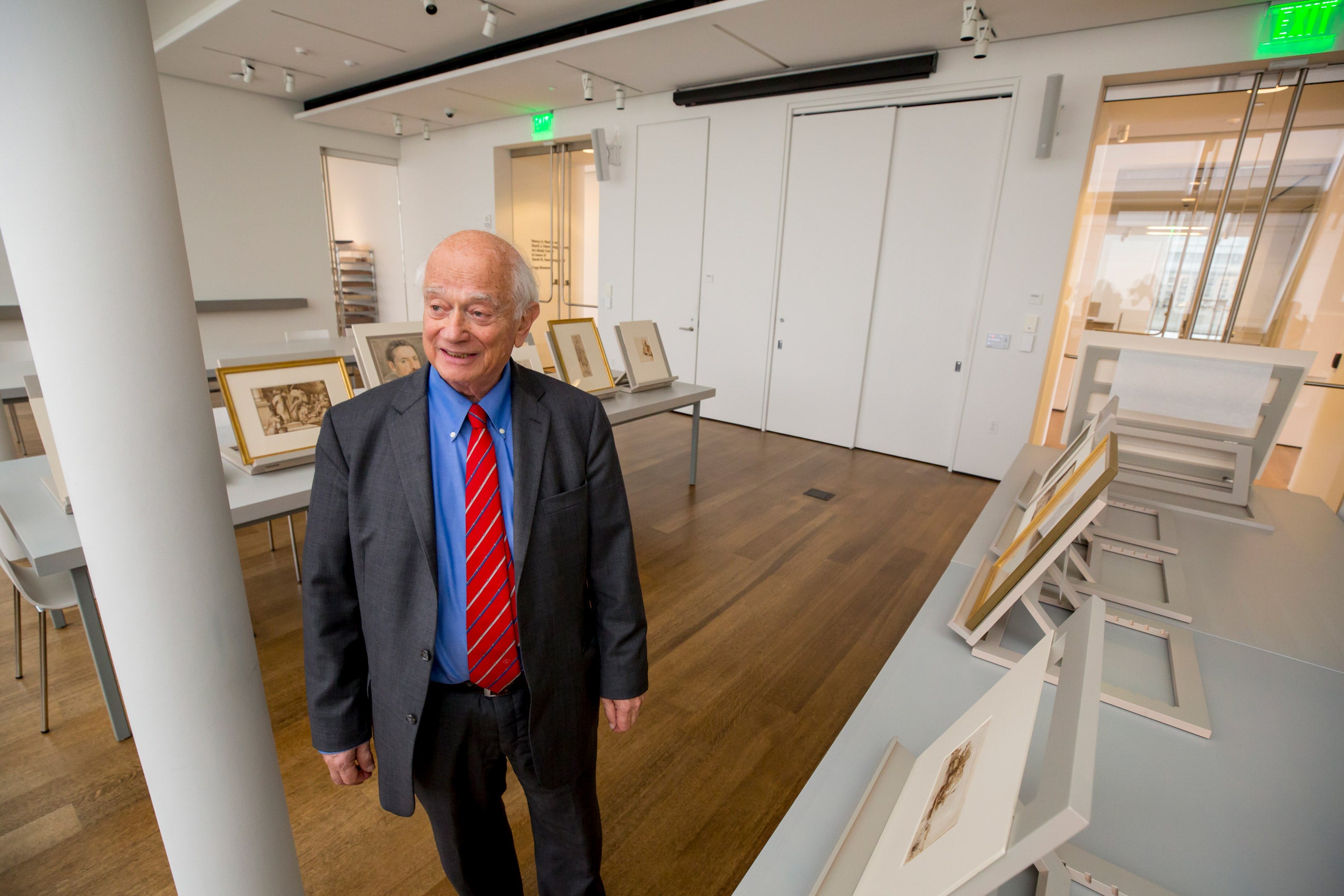On July 16, George Abrams LL.B. ’57, a Harvard Law School alumnus and world-renowned connoisseur of Dutch art, joined Joachim Homann, the Maida and George Abrams Curator of Drawings at the Harvard Art Museums, to discuss a selection from his collection of hundreds of significant works by Dutch and other European artists — and why he donated them to Harvard.
As an undergraduate at Harvard College in the early 1950s, Abrams himself learned from influential Harvard art historians such as Seymour Slive and Agnes Mongan. A few years later, as a student at Harvard Law School, Abrams spent a summer working abroad for a Dutch exchange program, making the most of his time in the country by visiting museums and cultivating a special interest in its art.
Abrams went on to establish a highly successful legal practice — and he and his wife Maida also became known as some of the world’s foremost collectors of Dutch Golden Age drawings. The couple appreciated drawings in particular, as George said on July 16, because of their intimacy and closeness to the artist and his or her craft.

Credit: The Maida and George Abrams Collection/Fogg Art Museum/Cambridge MA“Wooded Landscape with a Distant View to the Sea” by Pieter Bruegel the Elder
In his talk, Abrams recounted an especially exciting acquisition, titled Wooded Landscape with a Distant View to the Sea. “I first saw this in an obscure sale in Utrecht. It was attributed to Jan Bruegel or someone of that nature,” he explained. But after William Robinson, Abrams’s friend and a curator of drawings at the Fogg Museum, took a look, he realized he might have something else on his hands entirely.
Robinson suggested that the drawing could instead be by Pieter Bruegel the Elder, a more celebrated Renaissance artist from the Netherlands. An expert in Bruegel’s work later confirmed Robinson’s suspicions, calling it the “greatest [Bruegel] discovery in years,” recalled Abrams.
In June 2000, the Abramses donated 110 17th century Dutch drawings to the Fogg Museum, and bequeathed another 30 in following years, giving Harvard one of the most important collections of such artwork in the United States. In 2017, George announced an additional gift of 330 16th to 18th century Dutch, Flemish, and Netherlandish drawings to Harvard, preserving them for the enjoyment and education of generations of students, art historians, and aesthetes to come.
The Abrams collection is “really unparalleled in its depth and breadth,” said Homann in his closing remarks. “It’s a really rare privilege to have access to these works. … And as our perspective on art changes, thinking about the new interest in natural sciences … and in colonialism into globalism in art, all of these new questions lead us to look at works in the collection in new ways. And it’s just unbelievable how many answers we can get from this material.”
